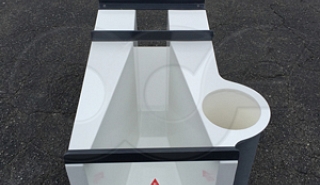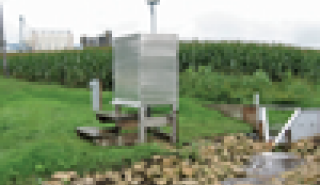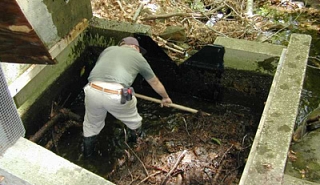Generally when we look at applying a Flume to measure flow we are more concerned that the flow is not too energetic. Sometimes, however, the flows can be too slow and too solids laden.
When this happens on low flows where the sediment load is high (and the sediment heavy), you can get sedimentation upstream of the flume (and towards the throat). In the throat itself and the downstream section, the sediments usually pass all of the way through.
This problem is most common at:
- Breweries (glass)
- Concrete / gravel operations (rock)
- Mine discharges (rock)
- Powder coating / sand blasting operations (shot)
Flume choice can help combat the problem, staying away from:
- HS / H flumes (approach section issues)
- Palmer-Bowlus flumes (collection uptream of ramp)
- RBC flumes (collection upstream of ramp)
but sedimentation may still occur.
With their narrow V-shape cross-sections, Trapezoidal flumes are the preferred choice, but, as we see below, even they can still have issues. V-shaped Cutthroat flumes can also be a good choice - again due to the V-shaped cross-sections.
When sediment issues arrise (or are forseen) it is best to put in a sump or trap upstream of the flume for the solids to collect in before they reach the flume...as the last thing you need is to have an artificially high level at the point of measurement because sediment has settled out there. This will become a maintenance issue for the operator, but unless their process changes, it is better to have the solids collect in a sump than in the flume.





